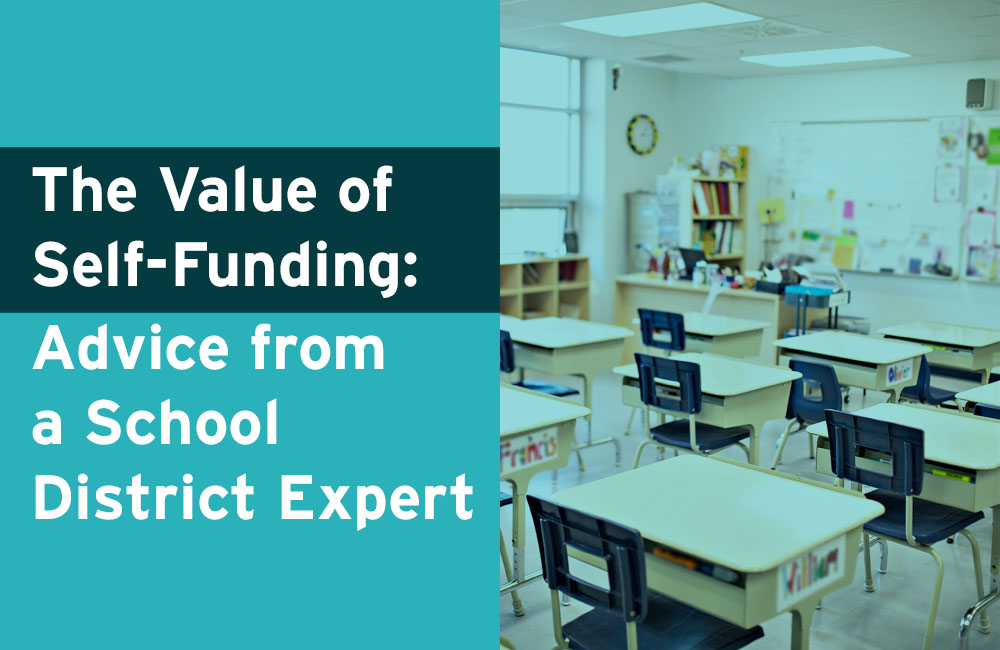
5 Recommendations for Public Employers from a Self-Insured School District
The Alliance recently sat down with Michelle Golden, Executive Director of Human Resources and Public Relations at the Chippewa Falls Area Unified School District, to ask what advice she would offer public employers that are making changes to their health benefits.
Number one is to consider self-insuring. “If you are willing to innovate and invest energy and effort into ideas that save money, you should pursue self-insurance,” she said. “We started self-insuring thirty years ago before I joined the staff here, but my risk manager and I are firm believers.”
Michelle explained that self-insuring gives their school district access to data, flexibility to manage costs, and control over benefit design that they would not otherwise have if they were fully insured. And this is important because public employers have to live within fixed budgets.
“We don’t sell anything so we can’t raise money if there is a bad year unless we go to a referendum which is a difficult, drawn-out process that is not guaranteed. And health prices in Wisconsin, and especially in the Chippewa Falls area, are extremely high and difficult to manage,” she said.
Over the course of thirty years, self-insuring has successfully helped the Chippewa Falls School District manage costs over time, even though there have been a few bad years. “Basically, self-insuring has put tools in our toolbox which might otherwise be empty,” Michelle explained.
Chippewa Falls Area Unified School District has over 650 staff and a total of 1,400 employees, dependents, and retirees on their plan. Incredibly, the cost-saving measures they have put in place have resulted in no premium and no deductible increases over the past seven years.
The Importance of Plan Design that Encourages High-Value Care
Second, Michelle recommends a retool of traditional plan designs. The school district switched from a standard low deductible plan to a high deductible years ago. Michelle says this decision was painful but necessary to encourage enrollees to use the high-value care resources they were making available. Even retiree plans transitioned to higher deductibles, and now their entire covered population is enrolled in HSA-eligible plans. Michelle calls this move the “wake-up call” for enrollees, and how much insurance had changed over time. Looking back now, she realizes that it needed to be done.
Third, Michelle says it is important to invest time and energy in creating high-value options for enrollees and then encourage the use of these through plan design. For the school district, areas of focus include mammograms, MRIs, orthopedic care, and chiropractic care, steering enrollees to options where outcomes are good and costs are much lower.
In addition, the school district opened an onsite clinic available to employees, family members, and retirees and meets with clinic staff monthly to ensure they are familiar with high-value care provider opportunities outside the clinic. Onsite clinic visits include the cost of labs, generic medications, and the physician visit for a low $25 fee, and preventive care is free. One year, they encouraged employees to use preventive care by providing a cash incentive right before Christmas.
Michelle said the onsite clinic was their most innovative move and something enrollees value. Once they use the clinic, they keep coming back. Trust was built because they spent time making the onsite clinic a convenient, affordable, and knowledgeable resource for their enrollees. Clinic staff are even involved in employee socials and in meetings with new hires.
At this point, Michelle says her team just needs to continue to be present, and help new employees understand the value of the clinic, which drives their return on investment even higher on an ongoing basis.
Care Navigation and Support for Enrollees
In addition to the onsite clinic, the Chippewa Falls School District then put other infrastructure in place to help enrollees find high-value care when they need it. This would be Michelle’s fourth recommendation.
“Just like everything else, the information doesn’t always stick until it pertains directly to them, but we have made investments in care navigation,” Michelle said. “They might not always remember the details, but they remember to reach out when they need help, and they have numerous resources they can use to get help.”
Michelle says it’s important to focus on education and support for enrollees. The Chippewa Falls School District put an emphasis on healthcare consumerism from the perspective of helping enrollees save money. They make contributions to employees’ and retirees’ health savings accounts, and then educate enrollees on how to hold on to their money. The messaging comes through loud and clear in educational materials that are available online and in hard copy, which Michelle distributes to staff lounges across campus. They make healthcare consumerism a focus during benefits meetings and periodic staff meetings held on professional development days.
“We don’t make staff learn this information on their own time,” she said. “We carve out the time during these meetings to ensure they can give their attention to it and have opportunities to ask questions.”
Final Recommendation: Collaborate with Others
All of the ideas described here have been worth the time and effort they’ve put into it, Michelle says. Staff, dependents, and retirees are not just empowered to use high-value care, they are doing it with remarkable success. And working with The Alliance helps them with the leverage they need as medical inflation starts to catch up.
“We know we won’t have zero dollar premium and deductible increases forever,” Michelle said. “But buying with other purchasers through The Alliance brings us leverage in a difficult region of the state. And the opportunities we have to learn through The Alliance – using their data tools and the educational events – is something about which I am really excited.”
She continued, “And the flexibility The Alliance offers means we can tweak our provider offerings and adjust them over time if needed. This is critical for us to manage costs in a tight budget environment.”
At the end of our interview, we asked Michelle what she wished policymakers understood better about public employer health benefits. Without hesitation, she said it was the excessive cost of care here in Wisconsin. “Providers need to be better managed. There are pockets of super high costs where there is not a choice of what health system you’re going to use. School districts do not have the flexibility to handle it in their budgets.”
This is an excellent point that The Alliance emphasizes in conversations with policymakers. As they consider ideas that impact public employer budgets, lawmakers should take the time to also consider the impact of higher health prices on taxpayers. If you’d like to learn more about these and other strategies The Alliance can assist you with, or would like to get involved in our health policy committee, please reach out to us.








